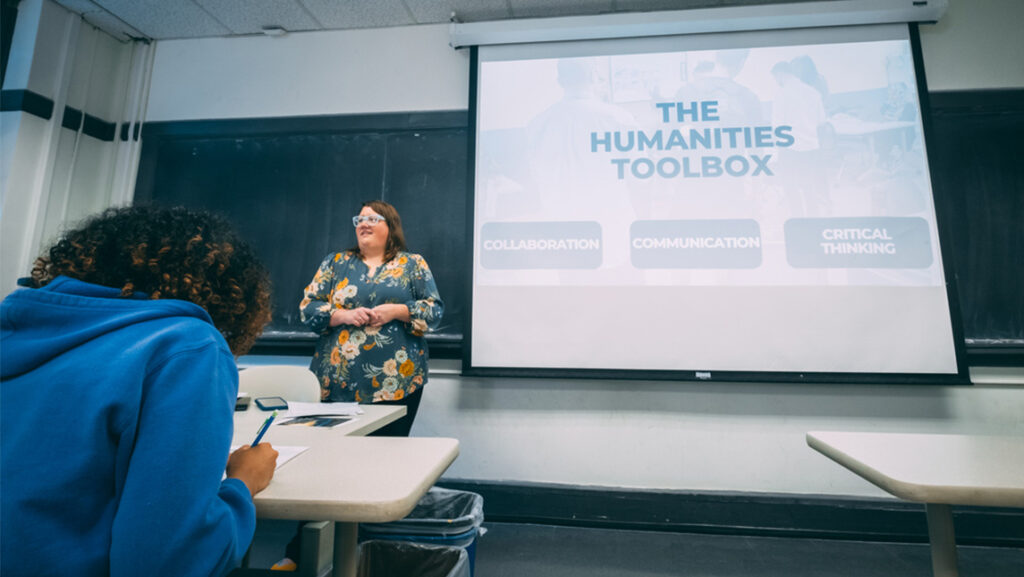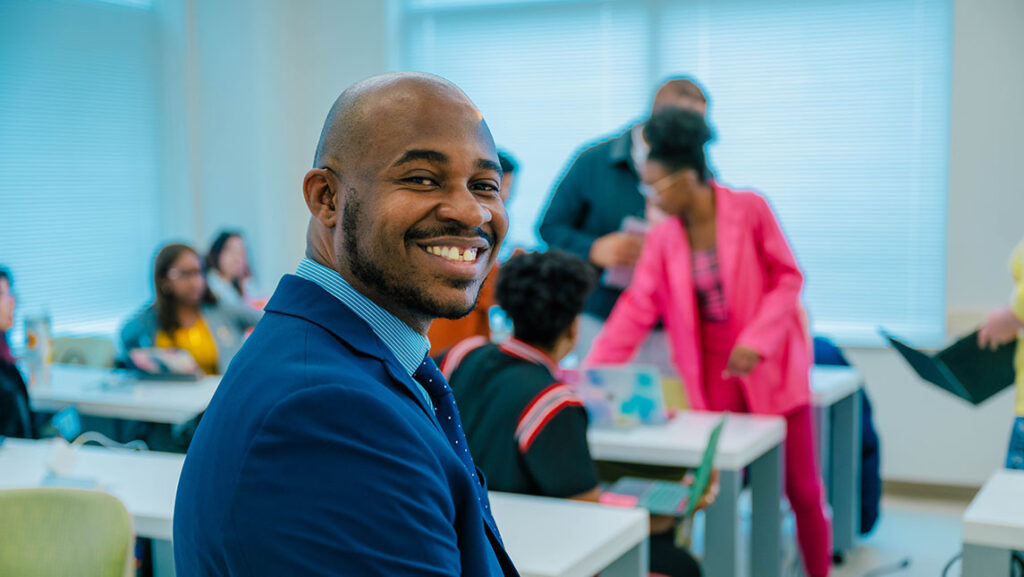Repost from UNCG Now
Mark another milestone for the Joint School of Nanoscience and Nanoengineering – the school is graduating its first Ph.D. students.
“Looking back six years ago, the school didn’t exist; the site was just a pasture with a dead tree on it,” said JSNN Dean James G. Ryan. “Now our first Ph.D. students are graduating. It feels good to have reached this point.
“We’ve done what we set out to do in the sense of building educational programs, building relationships with the industrial base, and assisting in economic development issues. We’ve met those check points and it sets a firm foundation for future growth.”
The students – Joseph E. Estevez of Mebane and Rabeah Y.F. Rawashdeh of Jordan – are in the Department of Nanoscience and were admitted as part of the school’s first class. They will receive their degrees at UNCG’s commencement at 10 a.m. on May 9 in the Greensboro Coliseum.
So much has been accomplished since UNCG and N.C. A&T State University developed the plan for JSNN.
The checklist was formidable: design the building, hire the faculty, build the building, buy and install the equipment, build the relationships in the community and state, and recruit the students. The school’s 100,000-plus-square-foot facility was built and equipped at a cost of $65 million and opened in December of 2011.
“Six years later, we have a state-of-the-art building that we’ve been in for a little over two years,” Ryan said. “We have four degree programs (master’s and doctoral) which are all productive and growing. Our first two Ph.D. candidates in nanoscience are graduating in May, and we expect the first nanoengineering Ph.D. candidates to graduate in December.”
The school, which offers only graduate studies, has attracted outstanding students, according to Ryan. The first class included 18 students. Currently there are 39 students in the Department of Nanoscience and 41 in the Department of Nanoengineering. The target is to have a steady enrollment of 100 students, divided evenly between the two departments.
Before JSNN began accepting students, word started getting around in the science world. Rawashdeh learned about it from her faculty adviser at Yarmouk University, more than 6,000 miles away in Jordan, where she was working on her master’s degree. Closer to home, Estevez was finishing a master’s degree at N.C. Central University.
At JSNN, Rawashdeh and Estevez undertook extensive research for their dissertation studies, and were able to use the school’s equipment, which is among the most technologically sophisticated in the state.
Estevez’s topic was “Fundamental Properties of Thermoset Resin with Boron Nitride Nanotube Reinforcement for Radiation Shielding Applications.” His research was funded by NASA, and he worked with adding boron nitride nanotubes to a resin compound to determine if the resulting composite would provide better radiation protection for astronauts.
Rawashdeh’s research was on “Mechanistic Studies of Water-Soluble Fullerenes as Free Radical Scavengers, Biological Antioxidants and NF-Kappaβ Inhibitors.” She tested fullerenes, the spherical molecules composed of carbon atoms nicknamed “buckyballs,” for their properties as antioxidants.
Both say they come from families where educational achievement is expected.
Rawashdeh, the only daughter in her family, has four brothers. Her father is an engineer, two brothers have Ph.Ds. and two others have master’s degrees. Her father and one of her brothers will be on hand to see her graduate. Afterward, she plans to return to Jordan to teach and do research at Yarmouk University.
Estevez got to take some JSNN classes with his father, Rafael A. Estevez, a biochemist who has completed a Master of Science degree and will join his son at commencement. His grandparents came to Florida from Cuba in the 1960s, and his grandfather worked as a carpenter and mechanic to support his family. Joseph wants to start his own business.
So now it’s on to graduation, where they will join almost 2,000 undergraduate and graduate students – and make history for JSNN.
Story by Steve Gilliam, University Relations
Photo by Chris English, University Relations


